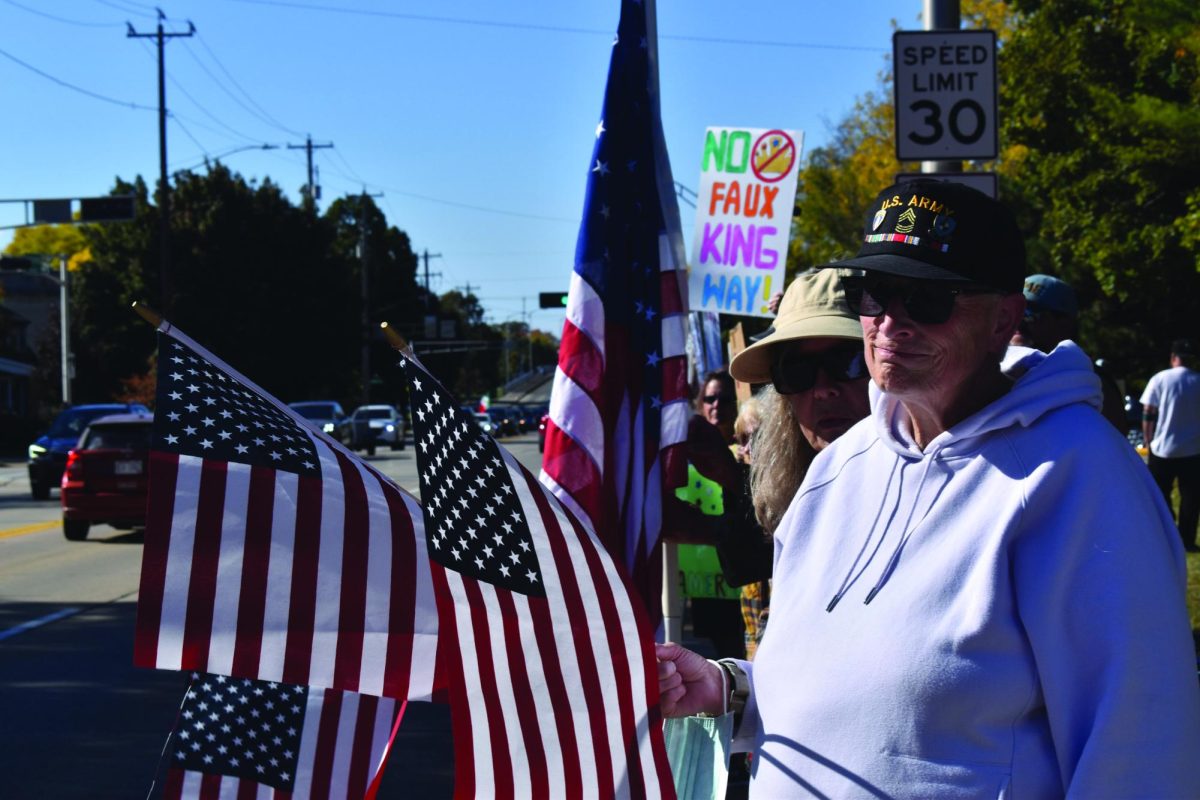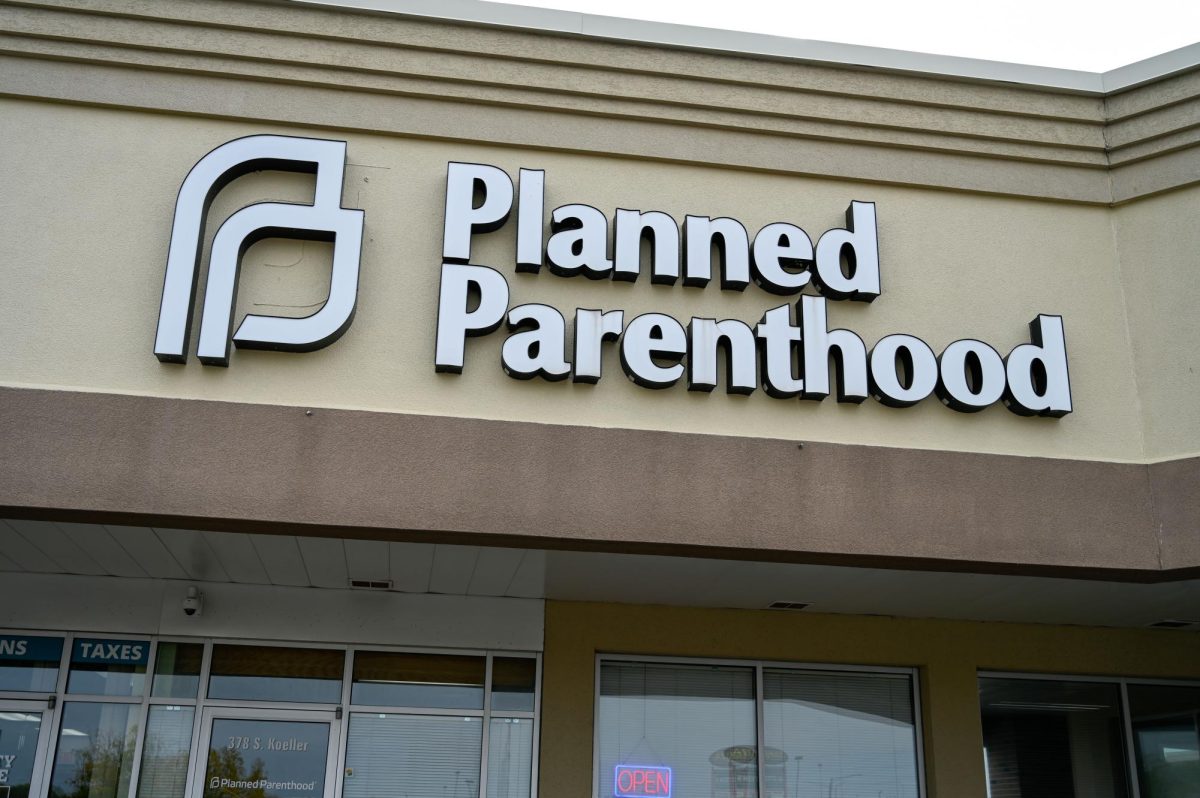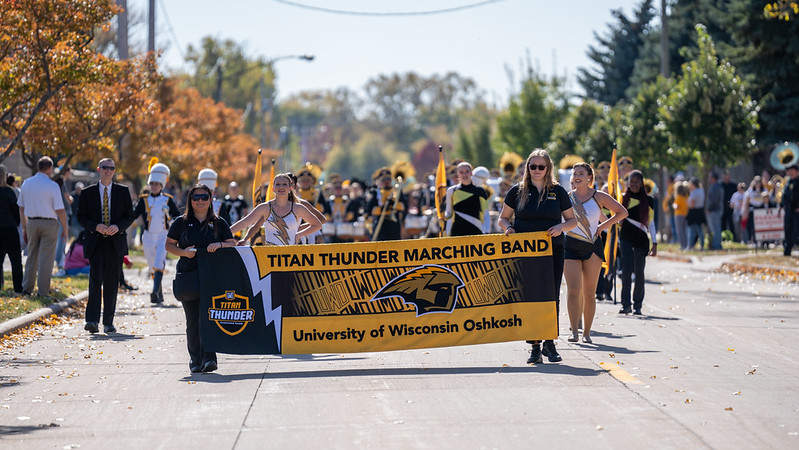After being established in the 1960s, the Student Support Services division located on UW Oshkosh’s campus has spent four decades, helping advise first generation and low-income students.
The program, which is included in the TRIO branch of academic programs offered across many universities in the United States, is federally funded by grants coordinated through the U.S. Department of Education.
Dating back to the implementation of the Economic Opportunity Act of 1964, the TRIO program has existed for 53 years. Even though there are eight total branches of the TRIO program, it was dubbed its current namesake after the creation of SSS, which was the third program underneath TRIO.
Upward Bound, Talent Search and then Student Support Services were the first three programs created underneath the TRIO umbrella in 1964, 1965 and then 1968.
Nancy Harrison, the current SSS program director, has been associated with different TRIO programs since 1990. She said while students may not fully understand the importance of the program and its prevalence to them, its basis is quite simple.
“The premise of SSS is that first-generation students do not have parents who experienced college; thus, they cannot guide their children as they begin their college journey,” Harrison said. “All of the services [in] the UW Oshkosh SSS and SSS STEM [Science, Technology, Engineering and Mathematics] programs are designed with that concept in mind.”
The SSS branch of the TRIO program for Oshkosh is divided into two separate areas: regular SSS and SSS STEM, which applies to any students who have declared majors in STEM fields.
Junior Braini McKenzie, who is in her second year of being a Learning Group leader, said her experiences while being a part of the program are both positive and consistently improving.
“Being a leader has allowed me the chance to be a positive example for my students and to grow as an individual,” McKenzie said. “I have become more confident and aware through my experience through SSS.”
Even with the program having existed on Oshkosh’s campus for more than 40 years, SSS only received accreditation in 2010, according to Harrison. Since then, Harrison said the program has undergone major improvements to get to where it is now.
“SSS advisers were not ‘adviser[s] of record’ when I first became the SSS director,” Harrison said. “We were awarded [that] status in the fall of 2010. SSS advisers do not have a caseloads of students. Whichever adviser was available when a student walked into the office was the adviser the student met with. This changed when we were given the ‘adviser of record’ status.”
In total, there are five advisers and one program director who help oversee the students with two focused on STEM majors. While Harrison oversees all students, the academic advisers directly interact with students and help them understand what it takes to successfully become a college student.
There are also eight Learning Group leaders who preside over weekly group meetings for freshmen. On a weekly basis, these leaders develop ideas to effectively present information on different topics with their co-leaders.
Junior Hannah Weber has been a leader for two years now, and she said this position has helped both incoming students and her personally.
“Being a leader has really helped me to come out of my shell,” Weber said. “Helping to educate first-year students navigate through their first few semesters also makes me [feel] good, to know they are better prepared.”
Being able to know students on a more personal level is something uniquely offered by the program. Compared to the roughly 400 student caseload that each adviser at the Undergraduate Advising Resource Center has, each SSS academic adviser has approximately 100 that they are responsible for helping, according to Harrison.
The SSS program averages around 420 students per academic year. The typical size for non-STEM majors evens out to around 300, with STEM majors providing the remaining 120 students.
Before Phil Welsh, an adviser on the SSS staff who helps with the traditional majors, came to UWO, he previously held positions at Benedictine University and Ripon College. At Ripon, he assisted in general student advising and the tutoring program.
With Welsh joining the staff in 2016, he said there were many facets of the program that stood out. He specifically noted the help students receive through the TRIO organization that impressed him.
“The greatest benefit for our students is the close connections they build with other first-generation students,” Welsh said. “By providing a welcoming and supportive atmosphere with students going through similar circumstances, they feel more confident in navigating the campus and persisting through the challenges of college.”
Another adviser who is a part of the traditional SSS program is Cindy Lopez-Johnson, who advises students in the College of Letters & Science. Lopez-Johnson came to Oshkosh after working as an academic adviser at the newly-renamed University of Arkansas Pulaski Technical College.
Lopez-Johnson said it is easy to understand the assistance a program like this would have given her while in school and credits Oshkosh’s program as a reason why she wanted to come to UWO.
“As a first-generation student myself, I wish my campus would have had a SSS program, because I know I could have really benefitted from a similar program,” Lopez-Johnson said. “Being the oldest in my family and the first to attend college, it was somewhat of a difficult experience at times. What made me really interested in the SSS adviser position was the small caseload and being able to work with my students on a personal level.”
For the program to receive funding, SSS must meet requirements that have been set in the grant. Such objectives as meeting persistence (retention), good academic standing and graduation rates must be satisfied to continue to earn funding.
Concerning retention rate, the grant states the traditional SSS program must have at least 70 percent of its students remain in school for the following year or graduate. For the SSS STEM program, 65 percent of enrolled students must either graduate or continue their education.
Good academic standing rates differ for both programs, as traditional requires 90 percent of students to meet performance levels, while STEM only needs 85 percent of its 120 students to hold high academic standing to qualify.
Finally, a certain amount of students need to meet graduation requirements. Every year, half the incoming class in the traditional SSS program must graduate within a six-year period, while 45 percent must graduate in six years if in the STEM program.
For actual results, both programs have met all categories needed to continue receiving grant funding.
Contributing to the program’s consistency is the involvement of students in the program, both as freshman in learning groups and as upperclassmen group leaders. Weber said her transition into college was made easier by the program and has contributed to her current success.
“During orientation, I felt a little awkward sitting in a room full of strangers, but looking back I am really happy I chose to be a part of the program,” Weber said. “I remember many smiling faces who came to talk to us, who I later learned were [our] advisers and they all seemed very eager to help me grow. The learning group topics were also helpful because I was able to learn things that my parents would not have been able to help me with and they provided me with tips on how [to] prepare for classes.”
Coming towards the halfway mark of the 2017-18 academic year, the program’s student body and staff is set. All advisers have at least been in SSS for at least a year now, creating a sense of cohesion within the staff, and Harrison is winding down her 27th year of affiliation with a TRIO-organized program.
Involving funding, the SSS program is 100 percent supported by government grants, according to the U.S Department of Education. Not all SSS programs on college campuses are awarded funding by the government, due to the lack of funding the educational section of the federal budget is receiving.
Having to deal with these monetary issues is a prevalent topic SSS has to deal with, according to Harrison. She said on a national scale, SSS has ways to increase program knowledge and brand awareness.
“There is a national TRIO association, the Council for Opportunity in Education (COE), which is housed in Washington D.C.,” Harrison said. “The COE staff maintains contact with our elected officials and share the story of TRIO. They guide us, the staff of the individual programs, on how to build relationships with our elected officials and to share information regarding our programs. If funding is threatened, we are notified and encouraged to reach out to our elected officials.”
Harrison said the program’s proven history not only speaks for itself, but also speaks to helping continually secure federal funding.
“We have experienced budget cuts but we have also experienced budget increases,” Harrison said. “Our annual performance reports demonstrate to the U.S.
Department of Education and to our elected officials that TRIO programs are effective. Studies have been conducted supporting the success of TRIO programs.”
In order to fulfill the federal grant given to the organization, SSS must meet certain requirements. From the types of services offered for students to the amount of students allowed in the program, certain stipulations must be met.
The current grant for the program will last until 2020, and it began in 2015. In total, the grant is for $3.2 million during the five-year period.
Linda Her, is one of the three advisers who presides over the traditional program and is also a former SSS program member who understands the importance of this program. She said seeing the progress students make as they make strides through either program is the biggest takeaway for her.
“I think it’s important for students to work with people who come from their communities and who are passionate about helping students succeed,” Her said. “I want to empower students to embrace the opportunities available to them and to aim reach beyond their dreams.”












